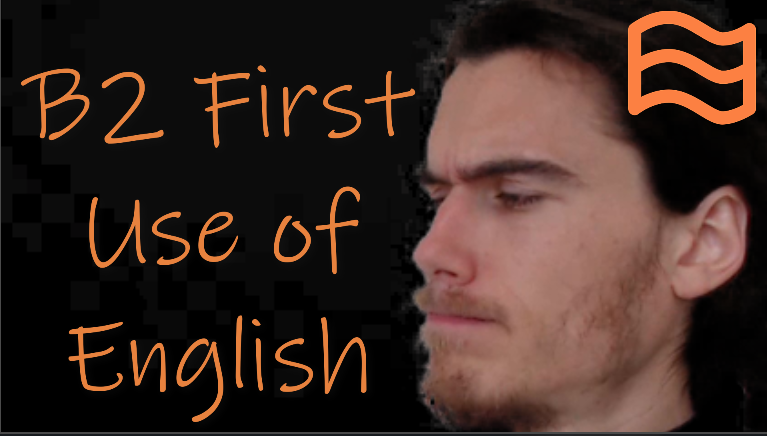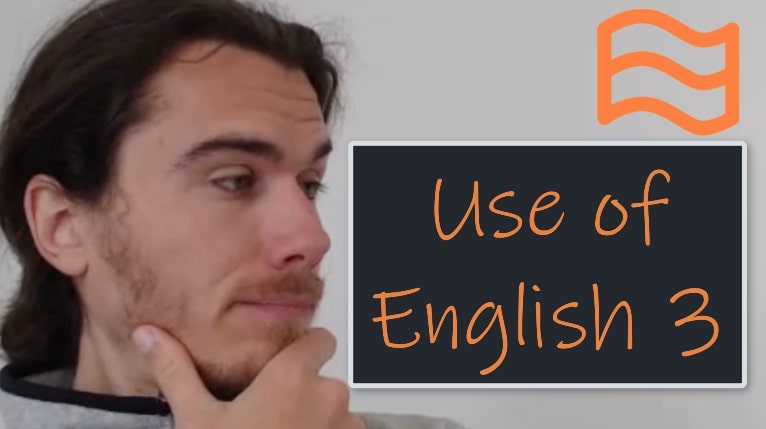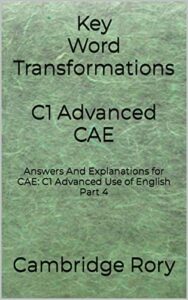Table of Contents
B2 First Use of English Page Introduction
The B2 First Use of English is an obligatory section of the Cambridge English FCE: B2 First exam. Students often find this to be a tricky part of the exam, but it is a lot easier if you have a good technique for each type of question.
This page is designed to give you tips and tricks for the the B2 First Use of English section of the B2 First Certificate (FCE) exam. There are four papers in the FCE exam. However, the Reading and Use of English sections are combined into one paper, so there are five sections. Reading, Use of English, Listening, Writing and Speaking. You should use the tips, techniques and examples on this page to help you prepare for the B2 First Use of English section.
Format
There are 7 parts in the 'Reading and Use of English' paper. Parts 2-4 are 'Use of English' and parts 1, 5, 6 and 7 are 'Reading'.
You have 1 hour and 15 minutes or 75 minutes to complete this paper.
The Use of English section tests your knowledge of how the English language works, the grammar, word formations, sentence formations etc. Here are some tips for each part of the Use of English paper.
Part 1 used to be in the 'Use of English' section, but it is now marked with the Reading section (parts 5, 6 and 7), so we will look at part 1 on the next page or you can skip to that section now >>
B2 First Use of English Tips
FCE Use of English Tip: sorry, this tip is available for higher level members only. Register/upgrade to access this tip now >>
You should time yourself when doing FCE exam practice exercises. See how long it takes for you to complete each section. Do this a few times so you have an average time. You can then plan your time in the exam according to how easy and how long each section takes. Do the sections which take less time, or which you find easier first. This is the best use of your time.
It is better to write an answer than write nothing at all. Try to save yourself a few minutes at the end of the paper to go back through each part and make sure you have written an answer.
B2 First Use of English Part 1
This part has now moved to the B2 First Reading page due to changes in the 2019 exam.
You can access this page via my short FCE online course >>
Alternatively you can access a page about part 1 in my long FCE course >>
B2 First Use of English Part 2
In part 2 of the 'Use of English' paper, you must fill in 8 gaps from a written passage. You have to think which word might fill the gap. You do not have any options to choose from.
Tips And Technique
Read the whole passage quickly to get an idea of the topic.
Read the whole sentence. Try to think what word goes in the gap based on the meaning of the sentence.
Have a look at the words before and after the gap. This will give you an idea what type of word you need to use, adjective, verb, noun, pronoun etc. English sentences often follow a structure....you can find more details about this here. It is often possible to know if a word is a noun, adjective etc. based on the ending of the word. For example, if a word ends: -ment, -ion, -ance, -ence – it will probably be a noun. If you can recognise word endings and understand sentence structures, you will do much better in many sections of this exam.
The words you need are usually short words, auxiliary verbs, prepositions and relative pronouns are very common.
There are some good exercises for the Use of English paper on this page.
B2 First Use of English Part 3
In part 3 of the 'Use of English' paper, you must fill in 8 gaps from a written passage. You are given a word to use to fill in the gap, but you have to modify the word. The word they give you might be a noun, e.g. product. However, in the sentence you may need to use this word as an adjective, e.g. productive. So, you need to know what type of word you need and how to spell this word.
Tips And Technique
Read the whole passage quickly to understand the general topic.
Read the whole sentence with the gap. Think what the missing word is. Check the words before and after the gap to help you decide the type of word you need. This article will be useful for this.
When practising for this exam, become aware of different word endings (see part 2 tip 3 above).
Read the whole sentence again. Make sure the word you have selected matches the meaning of the sentence. In this part of the exam they often want you to use negative words, e.g. unproductive. Decide whether you need a negative word depending on the overall meaning of the sentence/paragraph. If you need a negative, think what is the appropriate prefix for this word (-un, -dis, -im) etc.
Check your spelling! In all parts of the 'Use of English' paper, you lose marks if words are not spelt correctly.
Sorry, the video below is available for Gold FCE members only. Become a Gold member here >>
Learn more about part 3 in my long FCE course Start here >>
B2 First Use of English Part 4
In part 4 of the 'Use of English' paper, you must complete 6 sentences. You are given a sentence with a few words missing and you have to decide what words complete the sentence. To help you decide, they give you an example sentence above, with the same meaning. They also give you one of the missing words which you need to use. This word is very important and often dictates which other words you need to use with it.
I've devoted a lot of time helping students with this part of the exam and I even have a book and video course dedicated specifically to Key Word Transformations:
Even though the book above says 'CAE' it will be equally useful for FCE students as the questions are upper-intermediate level and the same as you will face in the exam.
You can also access the course above by becoming a Gold member >>
Tips And Technique
Students often find this part of the exam difficult. Practising these exercises before the exam is key. As we say 'practise makes perfect'.
Read the example sentence. Look at the word they give you. Think if you know what the missing words are. If you do, make sure all the words stay congruent, e.g. if you use a singular countable noun, make sure you use an article: 'a', 'an', 'the' before it.
Is the word they give you used in any common English expressions?
This exercise tests your knowledge of common English expressions as well as your knowledge of grammatical structures, e.g. reported speech. You should read my Prepare First Certificate online page, specifically the 'Before The Exam' section. Here I show you a strategy to follow to prepare for the exam and I suggest you buy an FCE practice book. The book I often use in my lessons is 'Ready for FCE'. Most FCE practice books should cover the grammatical structures, expressions etc. that you need to use. The problem is, you never know which expression they may ask for.
Here are some other key word transformation techniques you can try...
Key word transformations are one of the most difficult parts of this exam for many students. For this reason, I tested out and made videos using some other strategies for tackling this part of the exam. If the method above didn't work for you, you should watch this next video and find out about my perfect strategy...
You can practise using the Perfect Method from the video above with me in the next video...
If you want to find out more about exam format, how to book the exam and the best resources to use to prepare for the exam etc. check out this website or this page.
There are loads more videos of me completing example questions in my longer B2 First course...
Valuable information, clear explanations, engaging delivery, helpful practice activities, knowledgeable instructor. Lucia, FCE Use of English. *****
You can access my B2 First Use of English Course which is inside my longer FCE course by clicking the link below...




